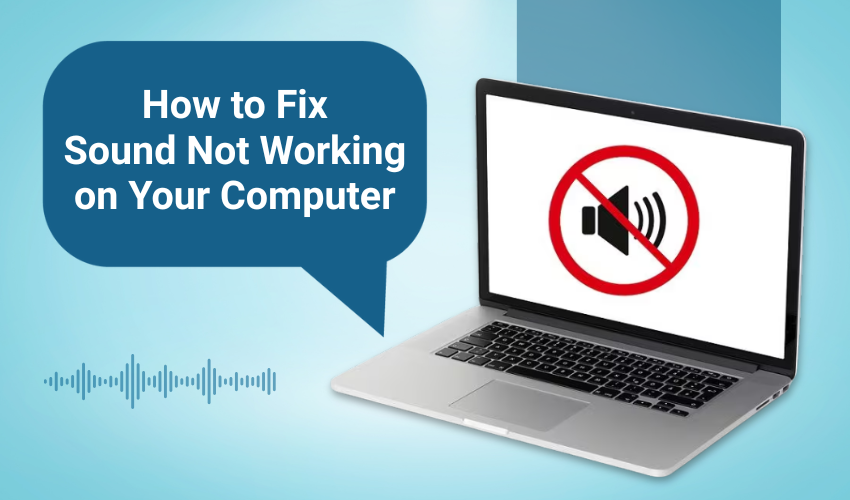How to fix sound not working on your computer

How to Fix Sound Not Working on Your Computer
If your computer has no sound, it can be really annoying. You might miss an important video call, not hear music, or get stuck in a game without sound. This audio troubleshooting guide will help you solve the problem and fix no sound Windows issues with simple, clear steps.
Method 1: Basic Sound Checks
The method here assists a PC user in resolving PC sound issues. Follow the steps:
- Click the speaker icon on the taskbar and make sure the volume is up and not muted.
- Use your keyboard’s volume keys to increase the sound.
- Disconnect headphones or external speakers to test built-in speakers.
- Plug your audio device into a different port or jack.
- Test your headphones or speakers on another device to confirm they work.
- Restart your computer to refresh system settings.
- Open Windows Settings > System > Sound > Troubleshoot and follow the prompts.
- Right-click the sound icon, select “Sounds,” then in the Playback tab, select the correct device and click “Set Default.”
- In the Playback device properties, disable all audio enhancements.
- Play audio from different apps or websites to confirm sound output.
- Verify that apps or programs are not muted individually.
Method 2: Update or Reinstall Audio Drivers
If the method above doesn’t work for the problem you are facing. Give this method a quick try.
- Right-click the Start button and then open Device Manager.
- Expand “Sound, video and game controllers.”
- Right-click audio device and select “Update driver.”
- Choose “Search automatically for drivers” and follow instructions.
- Restart your PC after the update completes.
- If sound is still missing, right-click the audio device and select “Uninstall device.”
- Restart your PC to let Windows reinstall the driver automatically.
- Visit the manufacturer’s site to download the latest driver if Windows doesn’t reinstall automatically.
- Install the downloaded driver by following the setup steps.
- Open Settings > System > Sound and test your audio.
- Confirm the correct playback device is set as default.
Method 3: Advanced System Settings and Fixes
If the methods above have not resolved the issue, the issue might exist with your sound settings. Here is how you can fix the settings. Follow the steps described below.
- Right-click the sound icon and open “Sound Settings.”
- Select the correct output device under “Output.”
- In Playback devices, right-click your output device, disable it, then enable it again.
- Press Windows + R, type “services.msc,” and press Enter.
- Locate “Windows Audio,” right-click it, and select “Restart.”
- Open Settings > Windows Update and install all pending updates.
- Use Control Panel > Recovery > Open System Restore to revert to a point when sound was working.
- In Device Manager, click “Action,” then “Scan for hardware changes.”
- Enter your BIOS/UEFI settings on startup and ensure onboard audio is enabled.
- If needed, reset Windows by going to Settings > System > Recovery > Reset this PC.
Conclusion
Following these instructions carefully will help you fix no sound Windows issues and restore your computer’s audio quickly using this reliable audio troubleshooting guide.
